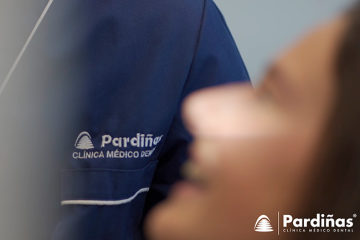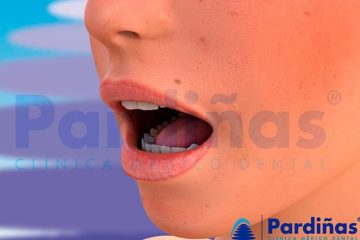Tooth extraction is the procedure carried out by the dental professional to remove one or more teeth from a patient. We talk about the types, process, causes, recommendations and other aspects of tooth extraction in this post.
- 1) What is an exodontia?
- 2) How a tooth extraction is performed
- 3) Recommendations before and after a tooth extraction
-
4) Possible complications after an extraction
- 4A) Dry socket, intense pain after a tooth extraction
- 4B) Infection in the treated area
- 4C) Damage to nearby structures
- 4D) Excessive bleeding after extraction
- 4E) Swelling and bruising
- 4F) Difficulty opening the mouth after an extraction
- 4G) Pain or contracture in the temporomandibular joints
- 4H) Osteonecrosis of the jaw
- 4I) Allergic reactions
1) What is an exodontia?
An exodontia is the medical term used to refer to the extraction of one or more teeth. Exodontia will be performed whenever it is justified for clinical reasons.
1A) Reasons to extract a tooth
We must not forget that tooth extraction is irreversible. And although there are many ways to replace missing teeth (implants, bridges, prostheses...), the goal is to try to preserve the original tooth. However, there are some situations in which tooth extraction is necessary.
1A.a) Widespread cavities
When a cavity spreads too much, it can destroy the tooth to such an extent that it cannot be recovered with any conservative treatment. Extraction is justified in these cases.
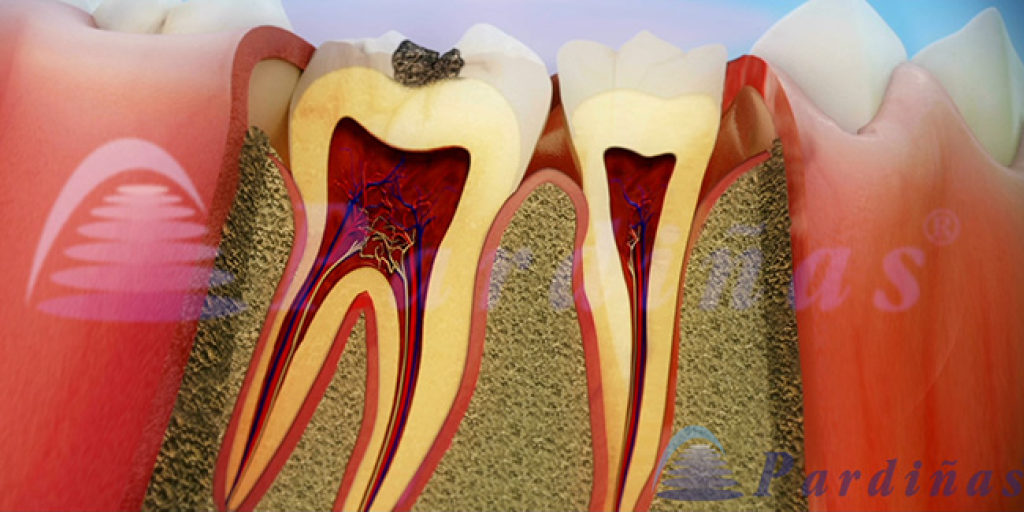
1A.b) Periodontal disease
In advanced cases of periodontal disease the bone can be affected to such an extent that it can cause tooth mobility. In the terminal phase of this disease it is possible to have to extract one or more teeth as it is not possible to preserve them in any way.

1A.c) Dental trauma
An impact to the mouth can uproot a tooth (dental avulsion or knocked out tooth) but also fracture it, two circumstances in which the tooth may need to be extracted.

1A.d) Tooth abscess
Dental abscess, colloquially known as phlegmon, is an infection with pus that affects the root. Depending on the cause or progression of this infection, it may require tooth extraction.

1A.e) Tooth extraction in orthodontics
Lack of space and malposition of teeth may require the extraction of usually the premolars in order to place the teeth in their correct position with orthodontics. This procedure is less frequent nowadays, since there are techniques and mechanics that allow more complex dental movements to be carried out without the need for extractions.

1A.f) Supernumerary teeth
A supernumerary tooth is one that exceeds the normal dentition. These teeth may not cause any type of problem, but they generally cause crowding, impactions, or displacement of other teeth. For all these reasons, supernumerary teeth are usually extracted.

1A.g) Impacted teeth
They are those that do not erupt correctly either due to lack of space, trauma or not having been born (agenesia). Although there are treatments that allow their recovery, in some cases the only alternative is to extract them. The most common case of impacted teeth are wisdom teeth, in which they are often retained within the bone because they do not have enough space to come out. Impacted canines are also common, which are usually pulled with orthodontic treatment to return them to their natural position.

1A.h) Baby teeth that do not fall out
The human being develops two dentitions throughout life, the baby teeth, which are 20 teeth and usually appear in the first two years, and the permanent ones, which begin to emerge between 6 and 7 years and extend up to adolescence. Baby teeth tend to be lost with the push of the permanent ones, but they may not fall out or may not fall out at the right time and extraction may be required.
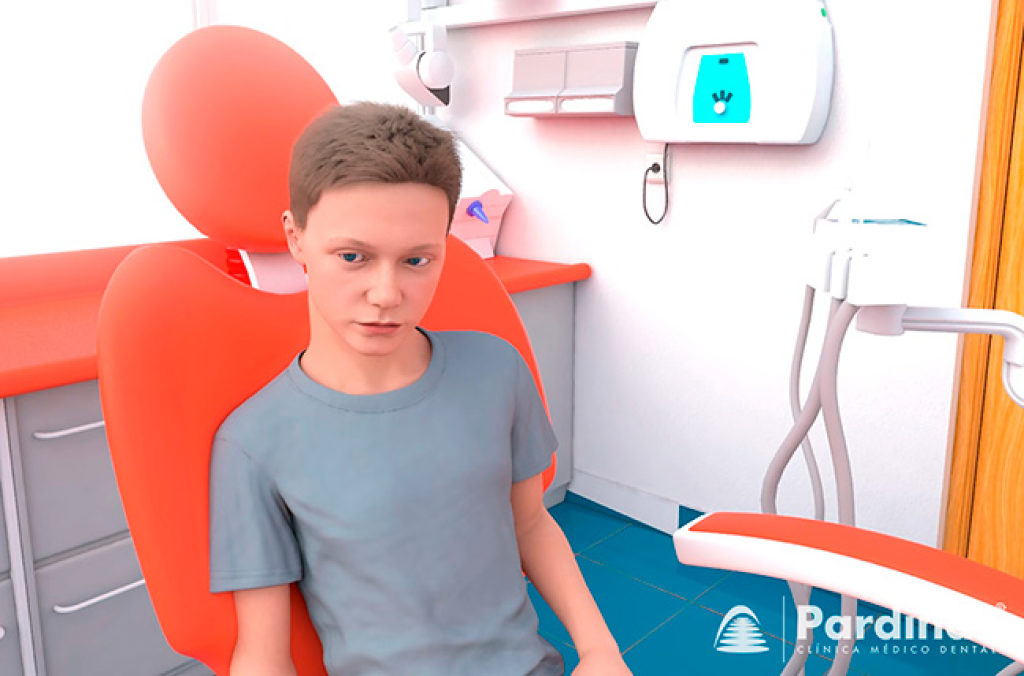
1A.i) Wisdom teeth
The last teeth to erupt are the wisdom teeth, which usually appear between the ages of 17 and 24. And although they can come out without causing any major problems, many patients suffer from them. Pericoronitis (an infection around a tooth that is emerging) and orthodontic treatments are the most common causes of wisdom tooth extractions.
2) How a tooth extraction is performed
Once the need to extract a tooth has been determined, it is time to do it. The procedure can be more or less complex depending on the shape, size, position and location.
2A) X-ray or scan of the patient
It is essential to make a good prior diagnosis. An x-ray or scan of the area is usually done to correctly see the position of the tooth, its shape and anatomy of the area to be treated.

2B) Local anesthesia is applied
Extractions are performed under local anesthesia, ensuring that the patient does not feel pain during the treatment. In this case, anesthesia is usually applied around the area to be operated on.
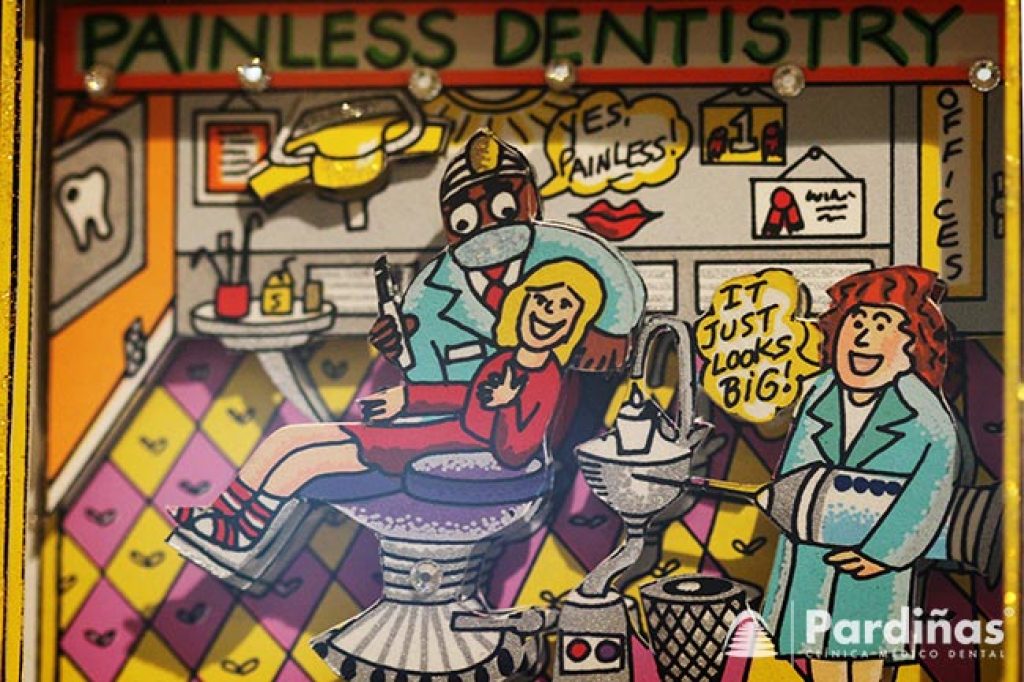
2C) The tooth is luxated and extracted
The dentist luxates the tooth using a tooth elevator once the anesthesia has taken effect. Then the dentist will use a forceps to grasp the tooth and pull it out with gentle movements.

2D) Surgical removal
So far we have described what would be a simple extraction, but there may be more complex interventions that require surgery. This may include lifting the gum, removing the bone surrounding the tooth, dividing the tooth into several pieces, etc. Stitches are often necessary if surgical removal is performed.

2E) Other common questions about tooth extraction
We answer some frequently asked questions about the procedure described.
2E.a) Is it painful to have a tooth pulled out?
Keep in mind that the extraction is performed under local anesthesia, so it should not hurt. If you notice any discomfort, it could be because the anesthesia was not placed correctly or because there is an infection in the area.
2E.b) How many teeth can be extracted in one session?
It is possible to extract any number of teeth if the patient's medical conditions allow it. That is, there are no coagulation, cardiac, or any other systemic problems that contraindicate it.
2E.c) What happens if the tooth is broken?
The extraction could be more or less complex depending on the type of fracture, it may even be necessary to divide the molar or tooth into parts to extract it.
2E.d) Is it always necessary to place sutures after a tooth extraction?
No, stitches are not necessary if the extraction does not require lifting the gum and the patient does not have any coagulation problems.

3) Recommendations before and after a tooth extraction
Although tooth extraction is a simple and very common intervention, it is not free of risks, so it is advisable to follow a series of guidelines before and after to minimize them.
3A) What to take into account before a tooth extraction
Before undergoing an extraction, it is essential to inform the dentist of any circumstance that may influence its correct development. Here we include the consumption of any type of medication that may affect the process, such as anticoagulants or the propensity to have infections, either due to being an uncontrolled diabetic or having a weakened immune system.
If you are being treated with bisphosphonates or monoclonal antibodies, a common medication in postmenopausal women with osteoporosis and/or breast cancer, it is essential to inform your dentist. This type of medication can have a side effect that affects bone healing, especially after a tooth extraction, known as osteonecrosis of the jaw. Performing tooth extraction in combination with the application of growth factors may be necessary in these cases. These situations are the most obvious, but do not hesitate to convey any information about your health status and medication to your dentist.

3B) Guidelines to follow after a tooth extraction
It is just as important to inform the professional correctly before the intervention as it is to follow the recommendations that he or she will make to you after the extraction. The success of the postoperative period will depend a lot on this, in which the first 24 hours are essential.
3B.a) In the first 24 hours after extraction
It is necessary for the bleeding to stop and for a clot to form in the treated area. To do this, the dentist will put a gauze pad in the gap left by the tooth that must be kept in place for about 20 minutes, applying light pressure, the time it usually takes for the clot to form. If bleeding persists, the procedure will be repeated with a new gauze for about 20 minutes. If it does not stop, it is important to contact your dentist. That first day you should also avoid rinsing, spitting, or drinking with a straw to avoid bleeding. Finally, it is normal to feel discomfort when the anesthesia wears off, so the dentist usually prescribes some pain relievers and even antibiotics if there is an infection. It is recommended to apply local cold if the area becomes inflamed.

3B.b) What to do during the first three days after an extraction
Avoid any contact with the extraction area during the first 3 days, such as the impulse to touch the hole with your tongue. It is also recommended to chew on the opposite side to the extraction to prevent food debris from entering the alveolus. In general, in the coming days, you should eat soft, cold foods. Also, avoid consuming alcohol and tobacco, as they can delay healing. If you experience severe pain or fever after three days, it is important to see your dentist, as you could be developing an infection or dry socket.

3B.c) Tips for the first week after a tooth extraction
Avoid exertion or intense physical activity during this week. You should brush your teeth normally, but you should NOT brush over the operated area, where it is recommended to use a gauze to clean it. Smoking is always an inadvisable habit, but especially during the healing process, as it can delay healing and increase the risk of infection.
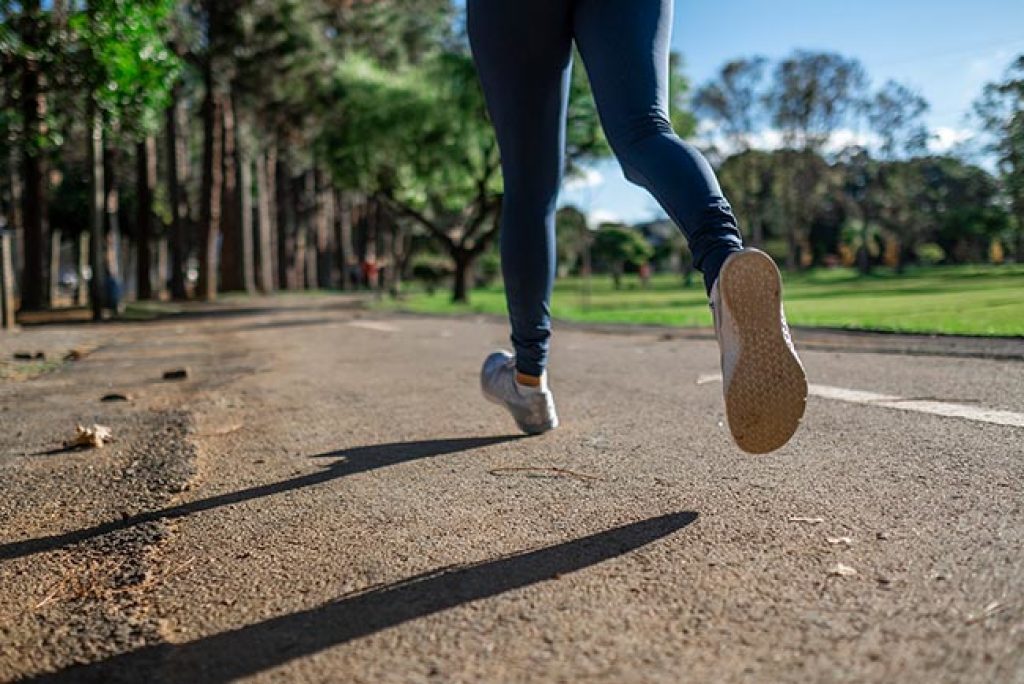
3B.d) Go to the dentist for check-ups and any problems
It is essential to attend the check-ups scheduled by the dentist in the days following a tooth extraction, but also to do so in the event of any anomaly in the healing process.

4) Possible complications after an extraction
Even if the extraction is performed correctly and the patient strictly follows the indicated guidelines, it is common for the operated area to become inflamed, bruises to appear, or a slight sensation of discomfort or pain to be perceived, symptoms that tend to disappear on their own. However, some postoperative periods can be more complicated and any of these problems may occur:
4A) Dry socket, intense pain after a tooth extraction
Dry socket is one of the most painful complications that can accompany an extraction, which usually occurs three or four days after the extraction. Under normal conditions, a blood clot forms to protect the operated area. We speak of alveolitis or dry socket when this clot breaks or does not form correctly, exposing the bone and nerves, producing very intense pain. Dry socket can be caused by various factors, but tobacco use is one of the main triggers.
4B) Infection in the treated area
Any surgery has risks and infections are one of them. Lack of hygiene, tobacco consumption, food impaction... can contaminate the area and cause an infection.

4C) Damage to nearby structures
The professional will always try to do the work as precisely as possible, but some structures close to the treated area could be damaged, such as teeth, nerves, bone, etc. These symptoms often improve over time, but in some cases, they may be permanent. In dental extractions in the upper posterior area of the mouth, there is a risk that the maxillary sinus could be affected, which could cause maxillary sinusitis or orosinusal communication.

4D) Excessive bleeding after extraction
Patients who have clotting problems, take anticoagulant medications, or do not follow postoperative rules may experience abnormal bleeding after surgery. If this occurs, apply constant pressure to the area with a gauze pad for 20 minutes and contact your dentist.

4E) Swelling and bruising
Although they generally do not occur, sometimes the area may become swollen and bruised. This will depend on the characteristics of the patient, the delicacy of the procedure, the complexity of the extraction and the following of postoperative rules, among other things.

4F) Difficulty opening the mouth after an extraction
Lockjaw is the inability to fully open the mouth, which can be due to multiple causes, including a dental extraction. It can be temporary or, rarely, persistent, and is usually due to inflammation of the jaw muscles or an infection.
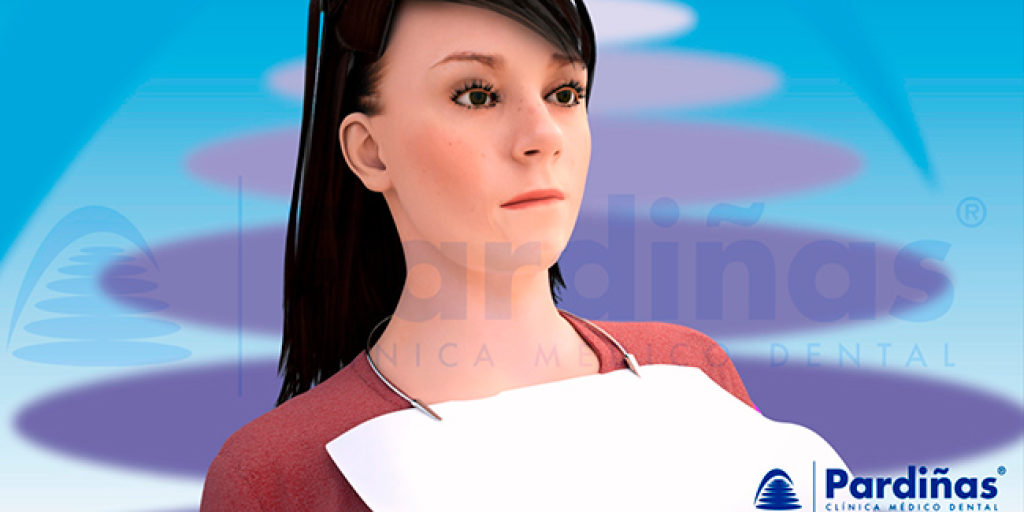
4G) Pain or contracture in the temporomandibular joints
During the extraction procedure, a prolonged mouth opening may be required to access the tooth to perform the extraction. This position can cause stress on the temporomandibular joints, which could lead to pain or contracture. Inflammation and swelling at the extraction site can also affect the function of the temporomandibular joints and cause discomfort.

4H) Osteonecrosis of the jaw
This is a side effect of antiresorptive medications commonly taken for osteoporosis, such as bisphosphonates and monoclonal antibodies, which can affect bone healing and cause necrosis. It is essential to inform the dentist if you are receiving any treatment of this type.

4I) Allergic reactions
Some people may experience allergic reactions to the materials used in the procedure or medications, although this is very rare.
